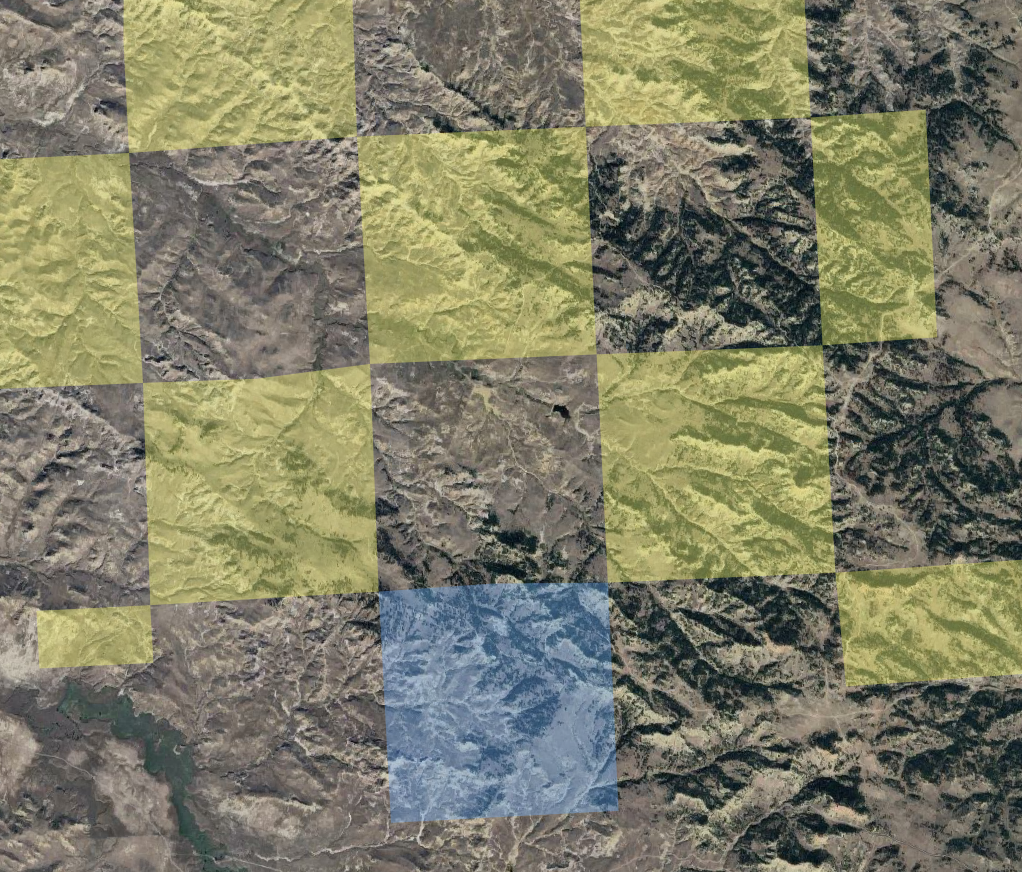What is Corner-Crossing?
Updated October 21, 2025
Corner-crossing is the act of moving from one parcel of public land to another where the two parcels meet only at a single point (a “corner”), while two private parcels touch the other sides of that same point. In the modern West, this question matters because millions of acres of public land are “corner-locked” by this checkerboard pattern and otherwise difficult or impossible for the public to access.

Why the checkerboard exists
The checkerboard dates to 19th-century railroad land grants that alternated square-mile sections along rail corridors. Today those alternating squares are often owned by a mix of state and federal agencies and private landowners, which creates thousands of four-way corners in places people want to hunt, fish, or recreate—and where landowners want to control trespass and liability.
The legal core: access vs. trespass
U.S. law recognizes both public access rights and private property rights. The flashpoint is whether stepping “through the airspace” at a shared corner is a trespass against the private owner or a lawful way to reach public land.
A key federal statute here is the Unlawful Inclosures Act of 1885 (UIA), which prohibits using fences or similar means to block free passage over public lands. Recent court decisions have interpreted the UIA to mean that private parties can’t effectively monopolize or block lawful access to public lands—an interpretation central to modern corner-crossing cases.
Perspectives
Landowners’ concerns
- Trespass, liability and land values: Even if a foot never touches private soil, landowners worry that corner-crossing infringes on their right to exclude, complicates insurance and liability, and can lead to property damage or conflicts at corners (which may be fenced or marked). Exclusivity is a key factor in land value, and so there is concern about lowering of land values.
- Management and privacy: Working ranches and timberlands depend on predictable access, biosecurity, and operational privacy; unsanctioned crossings can undermine that.
Public-land users’ concerns
- Access to land the public owns: When airspace or fence claims at a corner block passage, vast public areas effectively become off-limits. The Tenth Circuit emphasized that the UIA bars private parties from using barriers (including legal threats over “airspace”) to exclude the public from otherwise lawful access.
- Clarity and safety: Clear, uniform rules reduce conflict and help hunters and recreationists reach legal destinations without cutting fences or risking confrontations. News coverage has highlighted how the recent rulings open access to “corner-locked” acres across the West.
What is the law in Montana?
Historically, Montana Fish, Wildlife & Parks (FWP) has advised that corner-crossing “remains unlawful in Montana” and that wardens will refer cases to county attorneys—guidance criticized by access advocates for lacking a clear statutory basis. With the Supreme Court’s denial in the Wyoming case, the legal and policy conversation in Montana may continue to evolve, but as of today, the state’s legal status remains unsettled and potentially varies by county.
Corner-crossing is a gray zone in Montana
The recent federal developments strengthen the access argument nationally, but Montana-specific law and local enforcement discretion still control practical risk on the ground.
